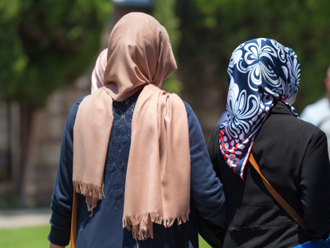A solar eclipse is a big event and it is understandable that many are travelling from various places to experience the Great American eclipse on the 21st of this month.
There is something about “darkness at noon”, or at any time during daylight hours, that captures the imagination and makes us recall stories in which eclipses have been used to good effect — one of them being an all-time favourite: A Connecticut Yankee in King Arthur’s Court.
More than two decades ago, after many readings of the hilarious sections of that book, we were thrilled when we realised that we were living in an area in the north-west of Rajasthan, in India, that would experience a total solar eclipse. The actual “spot” where we were likely to catch a glimpse of the corona or at least “the diamond ring” was about an hour’s drive from the desert hamlet where we lived, but we did not plan to make an attempt to reach there. There were sure to be many eclipse-enthusiasts and astronomers and scientists who would have set up camp there to record and note every moment of the occurrence.
Had we been just two adults, we would probably not have paid much attention to the phenomena, but we had an eight-year-old with us — and so we set about figuring out how we could safely view the eclipse. Despite being computer-less and internet-less and in a pretty secluded place at that time, we found ourselves getting all kinds of directions and all types of information from every source we tapped.
There were no eclipse glasses available and we didn’t know how to create them. We were told that viewing the eclipse through X-ray films was “safe”, but we adults looked at each other sceptically. We were reluctant to take chances. First, who would push whom to ensure that we suffered injuries that would justify having an x-ray plate taken? Second, suppose we did succeed in acquiring an x-ray plate — after going through an injury and an indeterminate recovery period — and if that x-ray didn’t do its job? We would be responsible for permanent damage to our child’s delicate retinas!
So, we resorted to what we recalled vaguely from our childhood: We made a pinhole camera out of a cardboard box. Armed with this, we waited for the big day, hoping that a sandstorm would not obscure the sun and ruin that once-in-a-lifetime occurrence.
It didn’t. The day dawned bright and clear. When the sky darkened and a slight chill arose, we remembered those stories of long-ago superstitions and prophecies and realised how easy it would have been to convince those who had no idea of what was happening to believe in magic.
Painstakingly-made contraption
We were already out in the compound with our pinhole camera, directing our son to keep his back to the sun and do this and do that. And then on the wall in front of us, we saw that the sun was throwing its image through the leaves of the single tree in the backyard. There seemed to be dozens of little suns with a bite taken out of each.
“We don’t need the pinhole camera!” we cried, lifting that painstakingly-made contraption from over our heads. And right there, on the wall, we watched as the eclipse progressed.
We didn’t get to see “the diamond ring”, of course, but we were content to watch it flash on the television screen later. For us, it was enough that we had been through a total solar eclipse and experienced the feeling of the sun being cut off so completely in the middle of the day.
It was an experience of a lifetime — and we were lucky to be in that out-of-the-way hamlet that fell within the path of the eclipse at that time.
Cheryl Rao is a journalist based in India.









